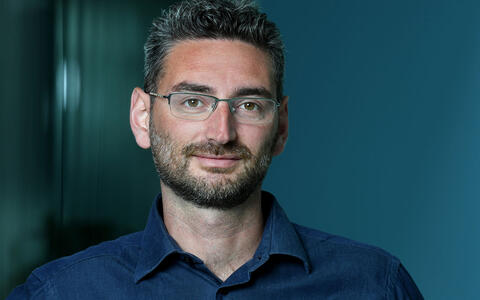Finding chinks in the molecular armor of glioblastoma
If you think of cancer as a war within the battlefield of the body, some nuances can be added to the metaphor: aggressive invasions interrupted by temporary cease-fires, collaborators behind enemy lines, encrypted messages, secret pacts and negotiations.
They all have correlates in the strategies used by brain tumors called Glioblastoma Multiforme (GBM), as they establish a foothold in the brain without triggering most of the body's defense systems. These tumors have some innate advantages over most other types of cancer.
First, the brain is already inhospitable to most immune cells, which in other tissues play the role of army and police force. Brain tissue is so delicate that an aggressive immune campaign would do more harm than good. Secondly, glioblastomas are the flawed offspring of brain cells called glial cells, which are partly responsible for keeping such unwanted players out of the brain. So the tumor cells likely inherit features that protect them and help them thrive while remaining largely undetected by our body’s radar. Finally, they are out of reach of most anti-cancer drugs, which have only a limited capacity to penetrate brain tissues. As a result, most of the approaches that are currently used against cancer in other tissues can be ruled out as treatments for GBM.
The complications don't stop there, says Gaetano Gargiulo. He will study GBM in the group he has just established at the MDC through a prestigious fellowship from the Helmholtz Association. Researchers have recognized that this isn't a single disease, but many – with differences that might prevent a one-size fit all treatment. They are so subtle that that there is still no reliable way to distinguish different forms of GBM, despite years of intensive research – and to develop a therapy, you have to know what you're up against.
New strategies to treat GBM and many other diseases represent urgent clinical needs that can only be solved through research. Recent years have seen a rapid development of new concepts and technologies that explore new disease mechanisms in ways that expose potential weaknesses.
Gaetano's lab, for example, will take advantage of new genetic engineering techniques to develop lines of mice with forms of GBM virtually identical to those of human patients, then carry out high-throughput screens to knock down RNAs one by one and study their effects on the disease. This should reveal cases where tumors are fatally disrupted but healthy cells survive – yielding both important insights into the mechanisms of cancer and points of attack for new therapies.
Gaetano brings years of experience in cancer research to the new position. He comes to Berlin after an extensive training first at the European Institute of Oncology in Milan, followed by posts at the Netherlands Cancer Institute in Amsterdam. He says this past work was instrumental in acquiring the technological background and – just as importantly - the forma mentis to address the greatest challenge in cancer medicine: finding ways to eliminate tumor cells without destroying their healthy counterparts. In other words, a way to fight an effective war while limiting collateral damage.
"Identifying a tumor's vulnerabilities is only a first step; killing malignant cells will certainly require identifying combinations of drugs that target those vulnerabilities simultaneously, selectively and efficiently,” Gaetano says. For those drugs to be effective against GBM, scientists will also have to learn how to deliver them to brain tissues.
That's a lot of battlefields to fight on at the same time – success will require an army with many types of expertise. “This group will include chemists, pharmacologists and – of course – medical doctors. The MDC has a broad scope in molecular medicine and is allied to the Charité – Universitätsmedizin Berlin under the umbrella of the Berlin Institute of Health (BIH): setting up our group in such a multidisciplinary place will allow us to draw on those types of expertise."






